Unlike common types of cabbage, this one towers several meters high. This variety of cabbage can live for decades like a perennial plant. At an altitude of 4,000 meters above sea level and under harsh conditions, this peculiar cabbage species becomes truly special.
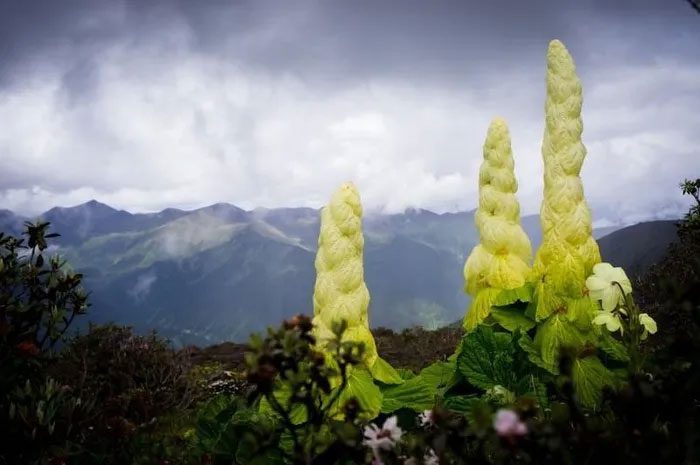
The “Tahuang” (Golden Tower), scientifically known as Rheum nobile, is referred to by locals as “giant cabbage”. This herbaceous plant primarily grows in the Himalayas at altitudes of 4,000 to 4,800 meters, scattered from northeastern Afghanistan to Bhutan and Tibet.
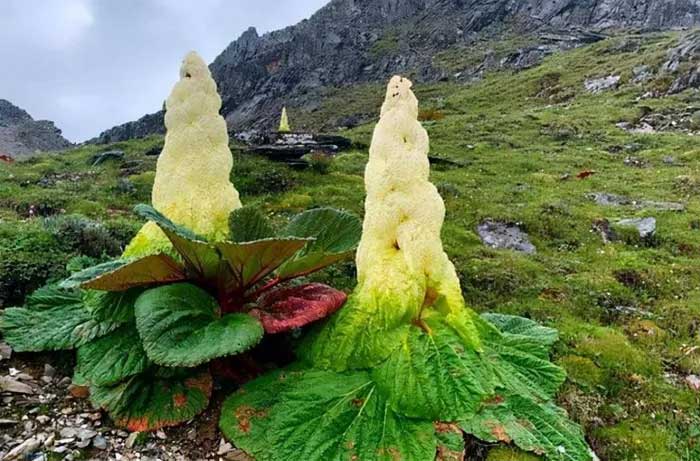
This plant can have gigantic flower clusters 1-2 meters tall, growing close to the ground.
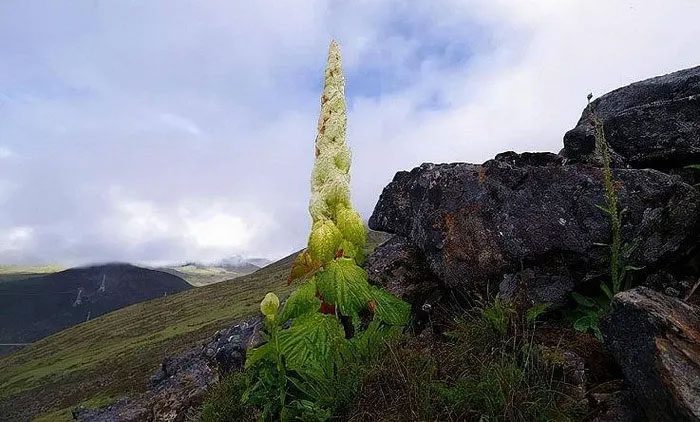
The Tahuang cabbage grows in rocky soil with its root system capable of penetrating up to 2 meters deep. This helps with the geological stability of Tibet, preventing landslides. Locals regard this plant as a treasure.
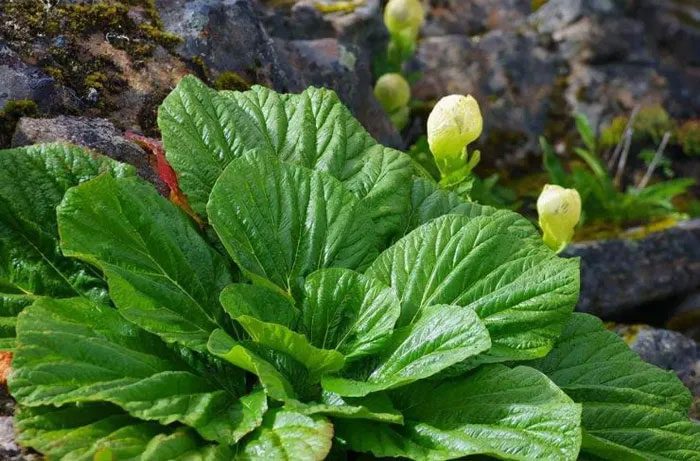
This plant has an incredibly resilient life span of about 10 to 40 years, thriving in frigid conditions year-round.
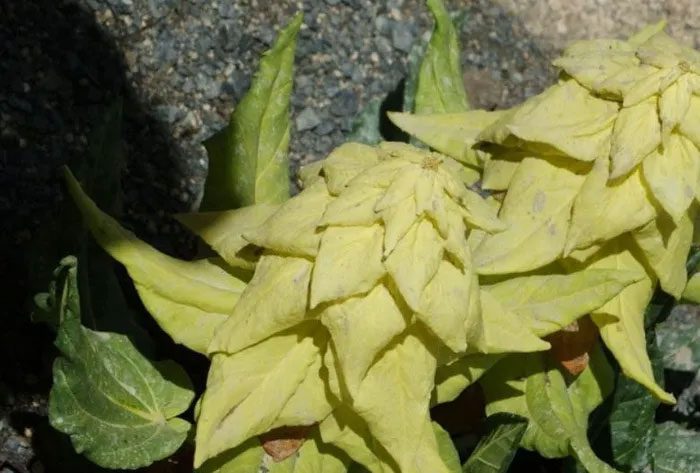
This is a rarely flowering plant; when it does bloom, it is a sign that the plant is nearing the end of its life. Thus, the life span of the Tahuang is determined by its flowering time.

The Golden Tower plant, when it has a white or green hue, can be eaten raw, providing a sweet taste when chewed.
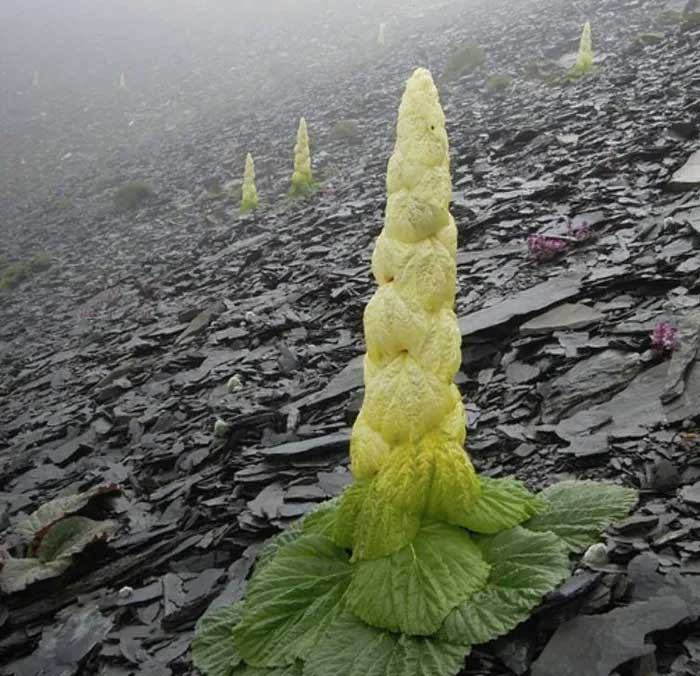
Tahuang cabbage is a precious herb, indeed considered a treasure; every part of it, from stems to leaves, has unique medicinal properties.
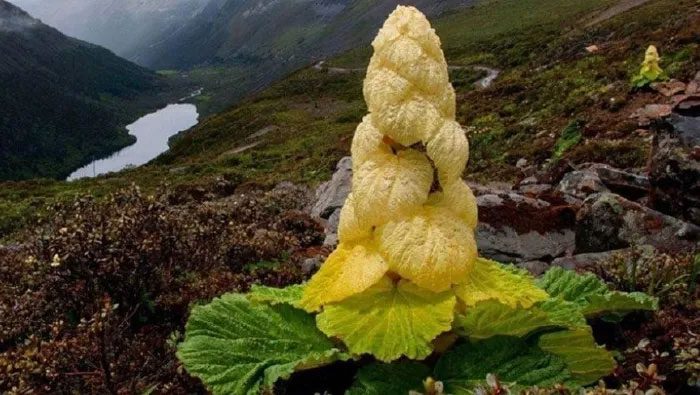
If you ever visit the Himalayas, seeing these yellow plants appearing on the mountains like cabbages, they are likely Tahuang.
When found, they should not be harvested as they are incredibly valuable. Tourists who carelessly uproot this plant in Tibet may be compelled to compensate local residents.


















































